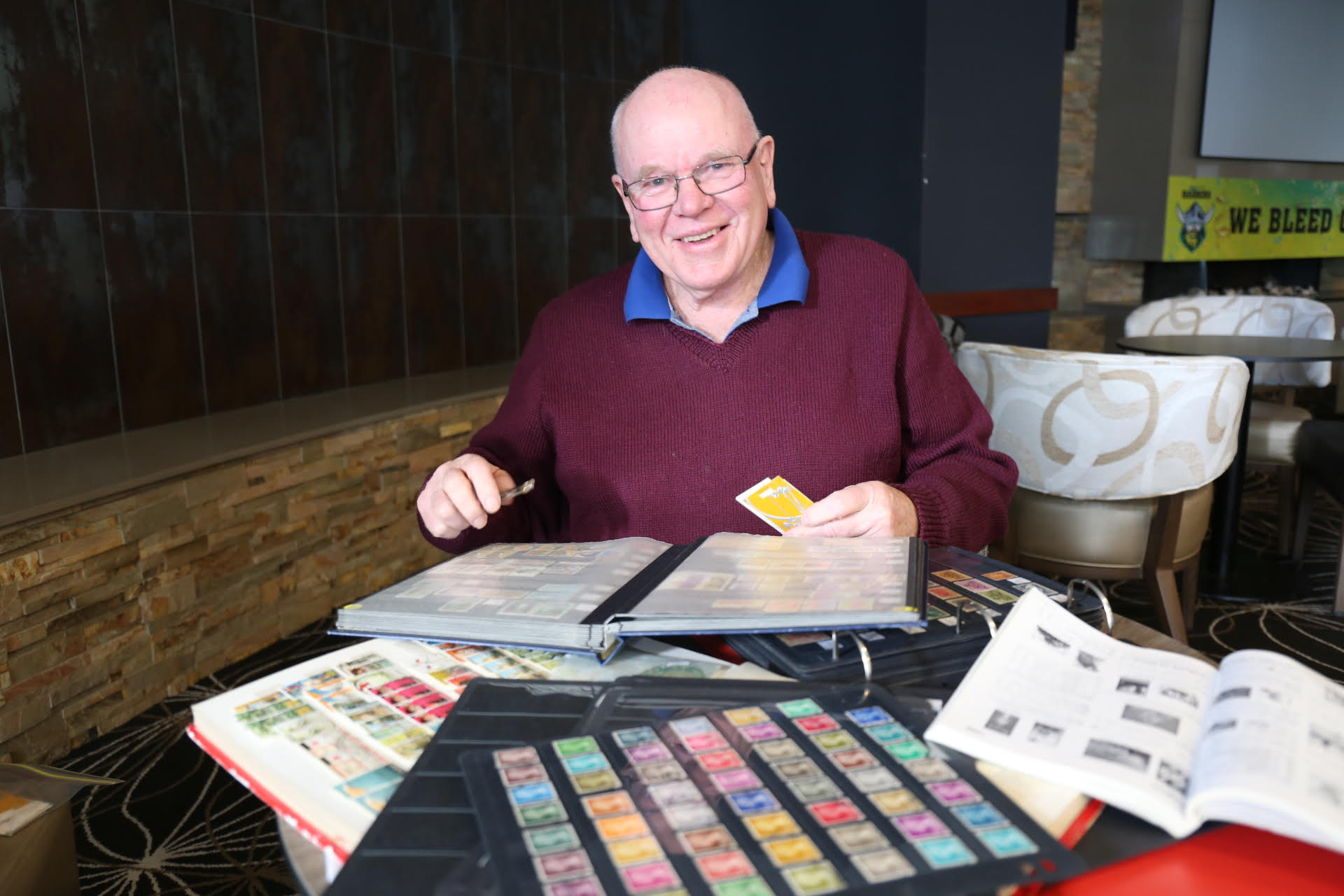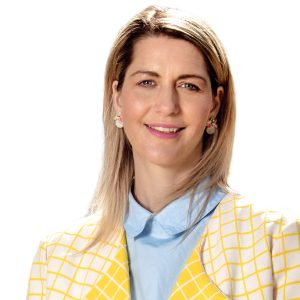
WHAT keeps someone stuck on a hobby for 60 years?
For Peter Stewart, 71, who has been cheerfully glued on stamp collecting for six decades, the pastime offers first-class joy.
Every small sticky-backed perforated piece of paper tells a story.
“There’s so much history in a stamp,” said Stewart, who now lives in Queanbeyan but taught geography at schools all over NSW, before retiring in 2009.
“I see no value in picking up a book and reading it from cover to cover, instead I collect stamps. I can spend four to five hours a day, sitting quietly, switching off and working on my stamp collection.”
Stewart was introduced to philately – the collection and study of stamps – by his older brother in Sydney, where they grew up.
“In those days there was no television so we collected stamps, we only had a couple of albums but it was something we could sit quietly and do together.”
Stewart is a true stamp collector.
He doesn’t know how many stamps he has or their value.
He does know that he cherishes each one of them.
“I couldn’t tell you how many stamps I have, perhaps a million stamps in 100 albums, but I can’t be sure, and I don’t know how much they are worth, I don’t do it for that, I do it for the love of it.”
Stewart collects unused stamps as well as ones on envelopes, his main interest is stamps from countries around the world.
He just finished assembling a collection on PNG and Denmark, and now he’s focused on collecting stamps from the Netherlands.
A two-cent green stamp from 1923, commemorating the 25th anniversary of Queen Wilhelmina of the Netherlands’ accession, is one of his favourites.
“This one has 11 and a half perforations, but these particular stamps exist with various numbers of perforations, so they can be difficult to count sometimes,” Stewart said.
By perforations, Stewart means the small rows of holes punched between stamps to make them easier to separate.
His go-to hobby is shared by an estimated 300,000 Australians.
During the COVID-19 pandemic, there was a surge in stamp collecting – similar to spikes in home cooking and sewing – because people had more time up their sleeve.
The uptake in philately, since covid, doesn’t surprise Stewart because even when you can’t travel, stamps bring the world to your fingers.
“I was a geography teacher, so I’ve always liked collecting stamps from other countries,” he said.
“When I was teaching, people would give me stamps from their mail from all over the world, but in recent times people don’t send letters, so up to the year 2000 I haven’t collected many mail stamps.”
Stamps were introduced in the 19th century as a way for people to pay for their mail.
The Penny Black, issued in 1840 in the UK, was the world’s first adhesive postal system stamp and depicted Queen Victoria.
The first Australian national postage stamp was issued in 1913 but the first stamps in NSW were issued in 1850 in one-penny, two-pence, and three-pence values.
The key to starting out in philately, Stewart said, was having a passion for a topic.
Many people assemble collections around a theme, some popular ones are yachts, lighthouses and steam trains. “I once knew a bloke who collected nudes,” Stewart said.
Some people like collecting colourful stamps, but for Stewart, who is colour blind, it’s all about the history.
“Ethiopia and Laos have really interesting stamps,” he said.
“A lot of people just collect stamps from one country, like Africa. There’s so many changes in politics in the countries in Africa which means there’s so many changes in the stamps. The wars do the same thing.”
About four years ago, Stewart joined a stamp club, the Philatelic Society of Canberra.
Every two years it hosts a stamp show with collectors and dealers visiting from corners of the globe to showcase their collections.
The club, which meets once a month and has 150 members, also hosts regular guest speakers.
“We recently learnt about the Paris pneumatic post, which was a tube message-carrying service that operated in the French capital prior to the 1900s,” said Stewart.
“Mail could be sent between the various post offices anywhere in the city.”
After decades of collecting Stewart still marvels at the details captured in miniature.
He’ll look at images under a magnifying glass or use a UV lamp to look for phosphor bands, or stripes, down the length of a stamp.
One stamp he’s fond of is a blue three-cent Colony of Canada issued from 1880-1882, depicting Queen Victoria.
He’s also keen on a chalky-blue, two-pence NSW stamp from 1851, also featuring Queen Victoria.
“This one is imperf, that means it has smooth edges on all four sides, it has been printed and issued with no perforations. This one would be worth about $50, it’s a nice stamp.”
Apart from itty-bitty eye candy, there’s therapy in it, too.
“Stamp collecting is something you can do silently and it helps you switch off.”
The challenge to find that must-have specimen is something that collectors, like Stewart, will continue to strive for.
“It’s a real thrill, especially if you complete a collection that you have been working on for a long time,” Stewart said.
“I’m keeping an eye out for a NZ, two-and-a-half penny, Campbell lighthouse stamp, issued in 1947.
“There’s eight of them in a series and I have seven, so I’d really like to find one to complete the set.”
Who can be trusted?
In a world of spin and confusion, there’s never been a more important time to support independent journalism in Canberra.
If you trust our work online and want to enforce the power of independent voices, I invite you to make a small contribution.
Every dollar of support is invested back into our journalism to help keep citynews.com.au strong and free.
Thank you,
Ian Meikle, editor





Leave a Reply